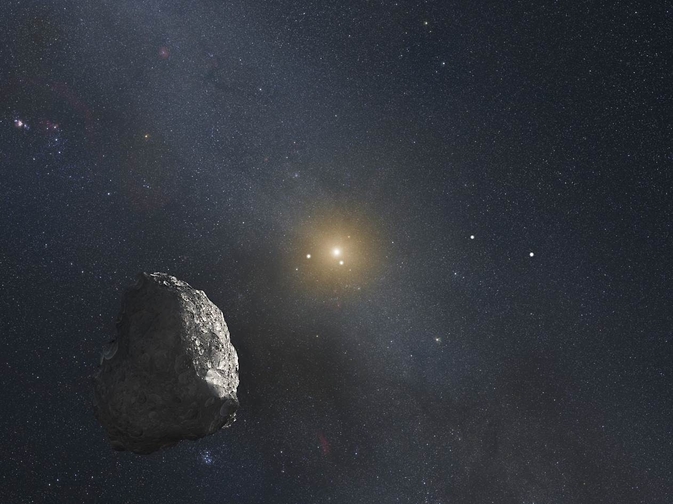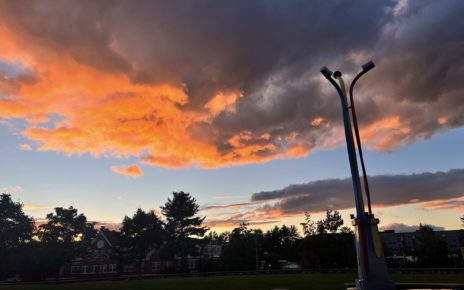Ever since the dawn of the human race, the vast unexplored territory of space above the world has been a source of speculative imagination. It is humanity’s nature to be curious, and nothing quite captures the collective curiosity as the idea of colonizing space.
Towards the end of the Apollo era before the final moonwalk in 1972, researchers from NASA argued for the possibility that a vast network of tunnels lie beneath the moon’s surface.
Avi Selk, a writer for the “Washington Post” mentioned what this could mean for scientists that have been focused on progressing humanity’s capabilities of colonizing space.
“Many scientists have long dreamed of building bases inside natural moon caves, where lunar explorers might sleep safely in inflatable homes, protected from the storms above.”
However, any evidence of these tunnels that could provide the ideal environment for establishing research-based settlements on the moon proved to be seemingly nonexistent. That is until Japanese researchers found proof of the tunnels that no one supposedly could see. Japan made the discovery through the use of its Kaguya Orbiter, claimed to be the largest lunar mission since the days of the Apollo program.
“It was launched in 2007 with state-of-the-art instruments, deployable satellites and a mission to solve the great mysteries of the moon’s origin,” reported Selva.
That claim far from rings hollow though, as the Kaguya drifted 60 miles over a region of the moon known as the Marius hills, a region of the moon that consists of a set of volcanic domes, and took a picture of a large, deep hole never before seen. Keep in mind this was all the way back in 2009.
It took until around 2011 for a group of Japanese and American researchers working together to learn a tiny bit more about the cave.
“The floor of the hole extended at least several meters eastward and westward under a ceiling of two other holes, like the mouth of a tunnel,” the group of researches revealed in the latest October publication of “Geophysical Research Letters.”
Before one starts to wonder how this information connects to the present day, it took until the present day for scientists’ part of the Kaguya program to officially confirm the existence of the long sought mysterious lunar tunnels.
A Japanese probe blasted radar waves into the suspected tunnel, with the goal of listening for any anomalies within the echoes that came back from underground. Consequently, a distinct pattern of echoes was heard through the probe, causing researchers to think it’s either the floor or ceiling of the long hoped-for lava tunnel.
According to Japan’s Institute of Space and Astronautical Science, it’s about 31 miles long. The tunnel is supposedly very ancient and may very well be buried 300 feet below the surface of the moon. If everything turns out to be correct, the long sought potential refugee for potential future colonists may be a reality rather than a science fiction element.
The fact of the matter is that space colonization needs to be established as an international priority. As humanity approaches an age where the threat of being replaced by an automated machine at work grows more eminent every day, it will be exploration of space that will determine humanity’s progress.
However, Chief of Human Spaceflight, Bill Gerstenmaier, revealed some current drawbacks that NASA is currently experiencing.
“I can’t put a date on humans on Mars, and the reason really is the other piece is, at the budget levels we described, this roughly 2 percent increase, we don’t have the surface systems available for Mars,” Gerstenmaier exclaimed at a meeting for the American Institute for Aeronautics and Astronautics this past summer in July.
Gerstenmaier also explained his thoughts on whether he thought a return to the moon was a more possible undertaking.
“If we find out there’s water on the Moon, and we want to do more extensive operations on the Moon to go explore that, we have the ability with Deep Space Gateway to support an extensive Moon surface program. If we want to stay focused more towards Mars, we can keep that.”

Instead of being forced to choose only one option, it’d be more practical to engage in talks with the international community to make the funding of space exploration a combined effort, rather than make NASA have to do everything. After all, if the international community was able to come together and construct the international space station, then it’s hard to say that proposing the idea of an international colony on either the Moon or Mars is futile.
Colonization of space needs to move past the petty political rivalries of modern times and usher in a new era of global cooperation. Imagine if countries like the United States, China and Russia could set aside their differences and come together with the goal of overseeing the construction of a home for humanity in the great void above the Earth. Not only would it be a remarkable scientific achievement, it’d be a huge achievement for the international community.
The key is to not view such a matter as impossible but rather as the great obstacle of the twenty-first century that needs to be overcome. If Neil Armstrong’s step on the Moon was one giant step for mankind, then colonization of space will be the ultimate dream for mankind.
Granted, it could possibly take the rest of the entire century to see this dream become a reality but our curiosity for space as a species is too great to leave it completely untouched. As Stanley Kubrick touched upon this idea in his masterpiece film, “2001: A Space Odyssey,” it would be the ultimate trip. Let’s be sure to take full advantage of the endeavor and never settle for mediocrity.




